Table of Contents[Hide][Show]
- Insights (TLDR):
- Understanding Interactive Content
- Benefits of Creating Interactive Content
- Engaging Your Audience with Polls
- Creating Fun Animations
- Delving into Interactive Video Marketing
- Offering Sneak Peaks
- Allowing Users to Rate Your Content
- Trying Reveal-Based Marketing
- Offering an Interactive Tour
- Showing Development with Interactive Timelines
- Integrating Interactive Content Across Channels
- Conclusion
Interactive content experiences let your audience engage directly with your material, making it more memorable and engaging. These formats, from quizzes to interactive videos, enhance user experience and boost participation. This article covers twelve innovative interactive content ideas to captivate your audience.
Insights (TLDR):
Interactive content enhances engagement and user experience by encouraging active participation, making it more memorable and enjoyable for users.
Utilizing interactive content can significantly boost conversion rates, gather valuable user data, and position brands as industry leaders.
Leveraging top tools like ThingLink, Apester, and Mapme can help create captivating and personalized interactive experiences that drive better audience interaction across various content formats.
Incorporating user-generated content can further enhance engagement by fostering a sense of community and trust, as well as providing authentic and diverse perspectives.
Understanding Interactive Content

Interactive content revolutionizes the digital world. Unlike static content that users passively consume, interactive content actively involves the audience, allowing them to create content. Think of it as a dialogue rather than a monologue. This type of content can feature various types of interactive content, such as:
quizzes
polls
reviews
data visualizations
maps
infographics
animations
social conversations
Interactive storytelling is another powerful form of interactive content, offering immersive experiences that captivate and engage users by allowing them to influence the narrative.
Each format offers a unique way to engage and inform the audience.
Interactive content stands out because it can deeply engage with users. Imagine scrolling through a static infographic versus interactive infographics where you can click on different parts to reveal more information. The latter provides a richer experience and makes the information more memorable. Interactive quizzes and surveys are another example, offering insights into consumer preferences while keeping them entertained.
The possibilities of interactive content are limitless, from real-time participatory videos during webinars to calculators delivering personalized solutions. This dynamic approach allows you to create interactive content that transforms how users interact with your content, making it more enjoyable and engaging. With the help of an interactive content tool, you can elevate your content creation process even further.
Benefits of Creating Interactive Content
The benefits of crafting interactive content extend beyond mere engagement. First, it significantly boosts user engagement by encouraging active participation and social sharing. Gamification elements, like earning points and unlocking achievements, can further enhance engagement by tapping into games’ motivational aspects.
Interactive content, including interactive web content, improves user experience by:
Increasing the time users spend on your website
Reducing bounce rates
Providing a personalized view, boosting consumer trust by showing exactly what to expect (e.g. virtual tours)
Visually conveying information, making it easier to understand and remember sequences of events (e.g. timelines)
Offering interactive content assets that engage and educate users through interactive content creation
Utilizing interactive assessments to provide personalized feedback and insights, enhancing user engagement and learning
Moreover, interactive content often leads to higher conversion rates. Adding animations to landing pages can quickly capture visitors’ attention, explain complex concepts, and highlight key messages, thus boosting conversions. Interactive content captures valuable data from users, providing insights into their behavior, preferences, and needs. This data is crucial for tailoring future content and marketing strategies.
Lastly, interactive content helps position brands as industry leaders and builds brand loyalty. By engaging the target audience and converting them into new customers, interactive content proves to be a powerful tool in any content marketing arsenal.
Top Tools for Creating Interactive Content

Utilizing the right interactive content tools is crucial to producing engaging content. These interactive tools help enhance user engagement and experience, making your content more captivating and informative. Some examples of tools you can use include:
Data visualization platforms
Interactive map creators
Quiz and survey builders
Interactive video platforms
Augmented reality (AR) and virtual reality (VR) tools
Interactive presentations can also be created using these tools, providing dynamic and engaging ways to convey information effectively.
The options are vast and varied, so choose the tools that best suit your content and goals.
For instance, Infogram offers a platform for custom data visualization with designed templates, which are perfect for creating visually appealing content. Calculoid allows users to add interactive calculators to their content, using pre-made templates and features like sliding bars and checkboxes to enhance engagement. By leveraging these top tools, content creators can craft engaging and interactive experiences both on desktop and for mobile that captivate their audience and drive better engagement rates.
We’ll explore three standout tools: ThingLink, Apester, and Mapme.
ThingLink
ThingLink is a versatile platform that allows users to create interactive videos, images, and 360° media. Interactive images can significantly enhance user engagement by allowing viewers to click on different elements to learn more. Imagine embedding a 360-degree tour of your store on your website or sharing an interactive video on social media that lets viewers click on different elements to learn more. ThingLink makes this possible by creating a custom link for embedding into websites or sharing on social media.
The platform’s strength lies in its ability to:
Transform static content into engaging experiences
Ensure a seamless experience across all platforms, whether you’re targeting mobile devices or desktop users
Enhance user engagement
Improve SEO performance, as search engines favor interactive and engaging content.


In the example above (credit to Thinglink.com), you see a room on the left with areas highlighted with circles that you can interacte with by clicking to learn more. For example, the image on the right shows the results of what happens when you click on the lightswitch.
Apester
Apester is another powerful tool for creating interactive content. Interactive polls are one of its standout features, allowing you to gather real-time feedback and insights from your audience. Specializing in quizzes, polls, and stories, Apester will enable you to engage your audience in a fun and interactive way. Whether you want to gather feedback, entertain, or educate, Apester’s interactive elements can make your content more compelling.
What sets Apester apart is its CSS design features, which allow for extensive template customization. This means you can tailor the look and feel of your interactive content to match your brand’s aesthetics, ensuring a cohesive and professional appearance.
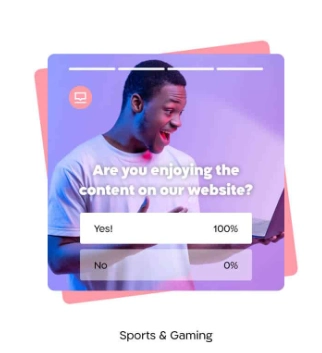
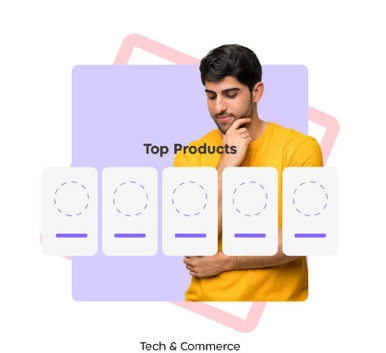
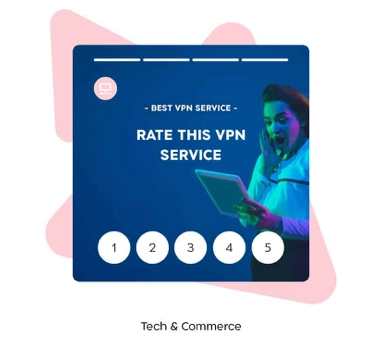
The examples from Apester.com (image credit), show the various ways they deploy interactive polls, quizzes and reviews. A great solution for social media and your website!
Mapme
Mapme is a fantastic tool for creating interactive maps. Interactive map creators like Mapme offer numerous benefits, including dynamic visualization of different locations or routes. Whether you want to visualize different locations or routes, Mapme allows you to do so dynamically. This makes it an excellent choice for travel blogs, real estate websites, or any content that benefits from geographic visualization.
Mapme’s customizable elements, such as photos, videos, and audio, enhance the user experience by providing a richer, more immersive interaction. While the platform currently supports maps only in English, its ability to create engaging interactive maps makes it a valuable addition to your interactive content toolkit.
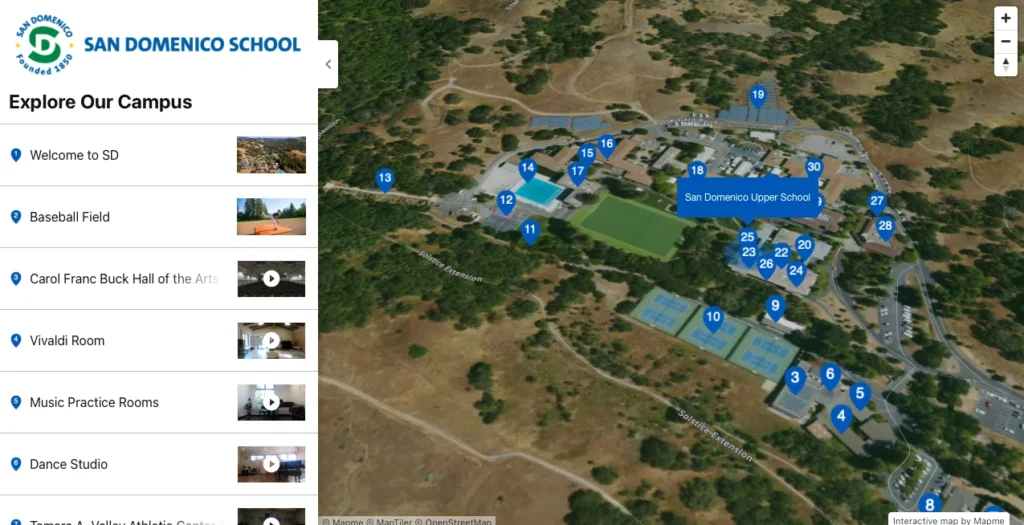
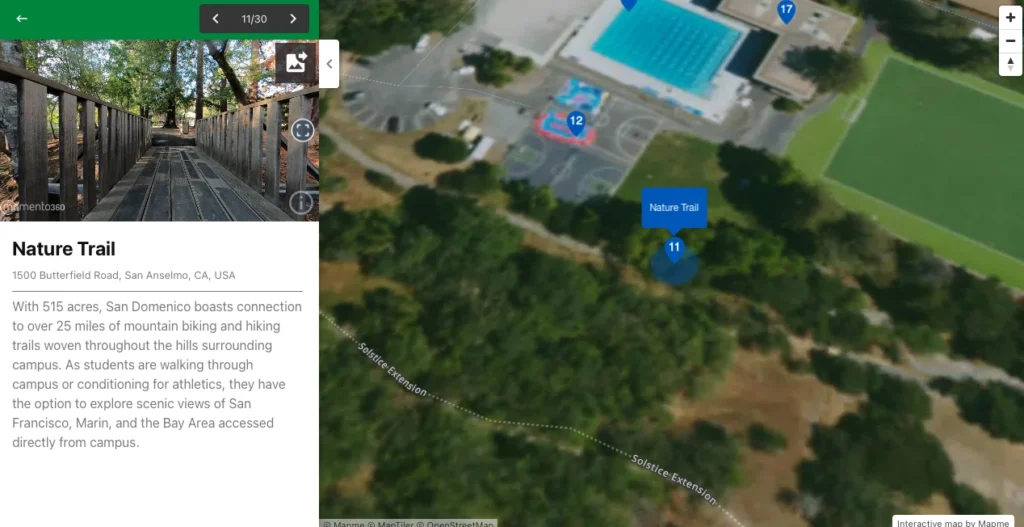
The example above from Mapme.com (image credit), shows an interactive map that allows users to click on various buildings and sites to zoom in and learn more. You can play with this specific example above here.
Engaging Your Audience with Polls

Polls are an effective method of engaging your audience and collecting insightful feedback. They allow listeners to become collaborators in the development of your content, providing insights that help shape future episodes or articles. Polls are also effective for gathering quick feedback, as they allow users to make a choice with a single tap.
Interactive surveys also offer similar benefits by providing a more in-depth understanding of your audience’s preferences and opinions.
Moreover, polls can help you:
Discover your audience’s unmet needs by asking direct questions about their preferences
Inspire new content ideas
Understand what resonates most with your audience
Boost engagement
Strengthen your connection with your audience
- Create User Genereated Content
By incorporating polls into your content strategy, you can achieve these benefits.
Creating Fun Animations
Animations can render your content more appealing and entertaining. GIFs, for example, are versatile for creating simple animations, memes, and other short looping visual content. They can quickly capture attention and add a playful element to your content.
Interactive animations, which respond to user actions, can significantly enhance user engagement by making the experience more immersive and enjoyable.
Lotties, on the other hand, are vector-based animation files used in web and mobile apps. They allow for complex, scalable animations without large file sizes. Cinemagraphs and photos with small parts that move continuously offer a unique and captivating visual experience. These animations can spark your audience’s curiosity, encouraging them to stay on your website longer and interact with your content.
Delving into Interactive Video Marketing
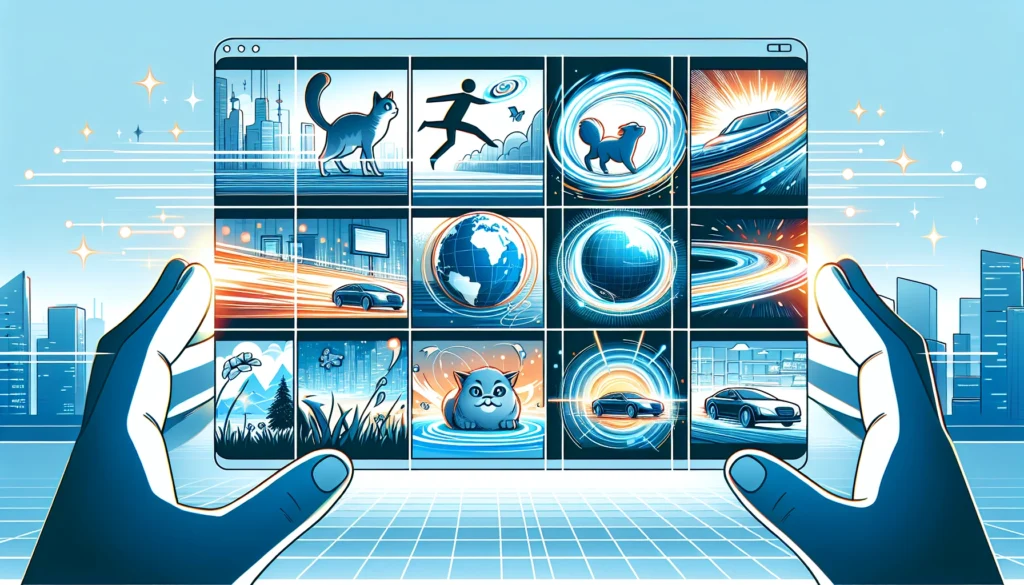
Interactive video marketing serves as an influential instrument to enhance audience engagement. Unlike traditional videos, interactive videos encourage viewers to actively participate, making the content more memorable and impactful. Interactive video platforms offer numerous benefits, such as enabling the creation of engaging and personalized content that can significantly boost viewer interaction. Compelling call-to-action (CTA) techniques, such as clear and concise commands like ‘Sign Up’ or ‘Buy Now,’ can significantly enhance the effectiveness of your videos.
Using a sense of urgency in your CTAs, like ‘Try now!’ or ‘Sign up today!’, can prompt viewers to take immediate action. Making CTAs both visual and verbal leverages the highly impactful nature of non-verbal communication. Interactive videos can include clickable buttons or links within the video, guiding viewers to perform specific actions, such as visiting a website or making a purchase.
Interactive videos offer several benefits:
Viewers can interact with the content, such as choosing their adventure or answering questions
This level of interaction engages the audience
It provides valuable insights into their preferences and behavior.
Overall, interactive video marketing is an effective strategy for converting leads and boosting engagement.
Offering Sneak Peaks
Sneak peeks effectively build anticipation and excitement for forthcoming releases or events. By offering a glimpse of what’s to come, you can motivate consumers to interact with your content and stay engaged with your brand. Interactive previews provide an engaging form of sneak peeks, allowing users to experience a more dynamic and immersive preview of your content. Teaser campaigns, for instance, can release snippets of content over time, keeping your audience hooked.
Tools like ‘coming soon’ landing pages and social media graphics can effectively support these teaser campaigns. Additionally, behind-the-scenes videos can make potential attendees feel more involved and excited about upcoming events. You can build a loyal and engaged audience by strategically offering sneak peeks.
Allowing Users to Rate Your Content
Enabling users to rate your content yields invaluable insights into their experience, aiding in enhancing your products or services. By understanding your audience on a deeper level, you can cater to their specific needs and preferences. Interactive rating systems offer additional benefits by making the rating process more engaging and user-friendly. User ratings and feedback can highlight pain points, guiding you to make necessary improvements.
Moreover, user feedback can help your support teams develop their skills and enhance customer service quality. Customer feedback provides valuable insights into satisfaction levels, assisting businesses to address issues, prevent churn, and build loyalty. You can create more engaging and effective content by incorporating user ratings into your content strategy.
Trying Reveal-Based Marketing
Reveal-based marketing fosters curiosity by slowly disclosing information or products. This approach can spark consumer interest and engagement by tempting them with the unknown. Successful campaigns, like Coca-Cola’s Future Room and HBO’s House of the Dragon premiere, have used reveal-based marketing effectively.
Interactive reveal campaigns offer additional benefits by engaging the audience in a more dynamic and participatory manner.
For instance, the Coca-Cola Future Room immersed visitors in the brand’s history and iconic imagery. Similarly, HBO’s House of the Dragon premiere used interactive activities at local malls and dramatic reveals to captivate the audience. By incorporating reveal-based marketing into your strategy, you can create a sense of anticipation and excitement that drives engagement.
Offering an Interactive Tour
Interactive tours offer an exceptional method to construct personalized experiences with your brand. E-commerce virtual tours, for example, provide an immersive, 360-degree view of a store, allowing customers to explore products virtually. This can increase familiarity with your store’s offerings and boost conversion rates.
Interactive virtual tours offer additional benefits by providing a more engaging and interactive experience for users, which can lead to higher customer satisfaction and retention.
Virtual Reality tours are also popular in real estate and tourism, allowing potential customers to explore locations or properties from the comfort of their homes. National Geographic’s VR Space Helmet campaign, which immersed journalists in a space-like experience to promote their series, ‘One Strange Rock,’ is a prime example of an effective interactive tour. By offering interactive tours, you can create memorable and engaging experiences for your audience.
Showing Development with Interactive Timelines
Interactive timelines serve as an influential means to visually depict sequences of events. They often include:
Text
Images
Links
Maps
Audios
Interactive timeline creators offer tools that make it easy to design and customize these timelines, enhancing their benefits.
This allows for much richer content. The flexibility of digital timelines allows them to be presented in either vertical or horizontal formats, spanning any period of time.
In business, timelines are frequently used in pitches to present a company’s current status and future projections. Vertical timelines are suitable for showing a business’s growth or increasing numbers, while horizontal timelines are commonly used for processes. Interactive elements or buttons in a timeline can reveal additional information when clicked or hovered over.
A timeline is a simple visualization of a multi-step journey in time. By creating effective timelines, you can engage users by allowing them to participate and experience the content at their own pace. This not only makes the content more engaging but also helps them better understand and retain information.
Integrating Interactive Content Across Channels
To maximize reach and engagement, it’s vital to create engaging content and distribute interactive content across multiple channels. Promoting your content on social media, email marketing, newsletters, and your website can help you reach a wider audience and ensure consistent messaging. For instance, animation in social media posts can turn static content into showstopping videos that grab attention and enhance engagement.
Interactive content distribution offers numerous benefits, including increased engagement, better user experience, and higher conversion rates.
It’s essential to ensure that your interactive content is responsive and accessible across all devices and platforms. This improves user experience and increases the chances of content being shared and engaged with. Additionally, using analytics tools to monitor performance and gather insights can inform your content and strategy adjustments.
Aligning interactive content with your brand’s broader marketing objectives is important for supporting your overall digital marketing strategy. By embedding clear, compelling calls to action within your interactive content, you can guide users toward the next step and improve conversion rates.
Integrating interactive content across channels ensures a cohesive and effective marketing approach.
Conclusion
Interactive content is more than just a trend—it’s a powerful way to engage and convert your audience. From using polls to gather valuable feedback to creating fun animations that spark curiosity, interactive content offers many benefits. An effective interactive content strategy can significantly enhance user engagement and drive conversions by providing a more personalized and engaging experience. Tools like ThingLink, Apester, and Mapme make creating engaging and dynamic content that stands out in the crowded digital landscape more accessible.
Integrating interactive content across multiple channels maximizes reach and engagement, ensuring your audience receives a consistent and immersive experience. Whether you’re offering sneak peeks, interactive tours, or reveal-based marketing, these strategies captivate and convert. Embrace interactive content and watch your engagement and conversions soar.
Frequently Asked Questions
What is interactive content?
Interactive content, such as quizzes, polls, reviews, data visualizations, and maps, actively engages users. It’s a great way to capture and maintain audience interest.
What are the benefits of creating interactive content?
Creating interactive content offers increased user engagement, improved user experience, higher conversion rates, and valuable insights into user behavior and preferences. These benefits can help optimize your content strategy and drive better results.
What tools can I use to create interactive content?
To create engaging and interactive content, you can use ThingLink for interactive videos and 360° media, Apester for quizzes and polls, and Mapme for interactive maps. These tools can help you make your content more interactive and captivating.
How can polls engage my audience?
Polls engage your audience by allowing them to provide feedback, participate in content creation, and inspire new content ideas. This strengthens their connection to your brand and helps create a more interactive and engaging experience for them.
Why should I integrate interactive content across multiple channels?
Integrating interactive content across channels maximizes reach and engagement, ensures content is responsive and accessible, and aligns with broader marketing objectives, ultimately enhancing your overall marketing strategy.
What are some examples of interactive content formats?
Some examples of interactive content formats include quizzes, polls, interactive infographics, data visualizations, maps, animations, and interactive videos. Each format offers unique ways to engage and inform your audience.

 What is a Domain Name and Why It Matters
What is a Domain Name and Why It Matters